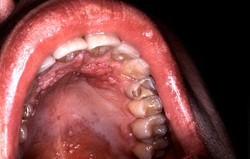In the United States, human papillomavirus (HPV) is the most common sexually transmitted disease. Seventy-nine million Americans have it, and 14 million new infections emerge there yearly (Centers for Disease Control, 2013).
Nearly every sexually active adult in that country will eventually acquire the infection. Those who are in a mutually monogamous relationship with an uninfected partner have protection against HPV infection. Usage of condoms, to some extent, prevents transmission as well. Moreover, the human papillomavirus vaccine is a safe and effective method of prevention (Centers for Disease Control, 2013).




 The Reality of Aspirinon 05/24/2021
The Reality of Aspirinon 05/24/2021
 An Old Microbeon 03/31/2021
An Old Microbeon 03/31/2021
 Coronavirus and Mental Illnesson 02/14/2021
Coronavirus and Mental Illnesson 02/14/2021
 Acute Ischemic Strokeon 12/25/2020
Acute Ischemic Strokeon 12/25/2020


Comments